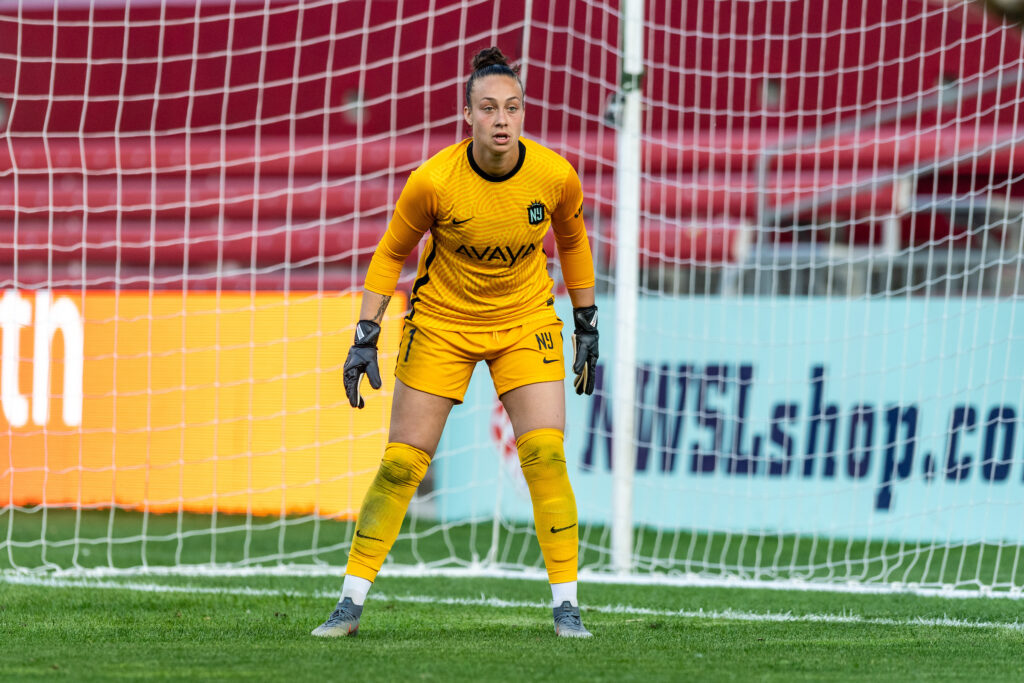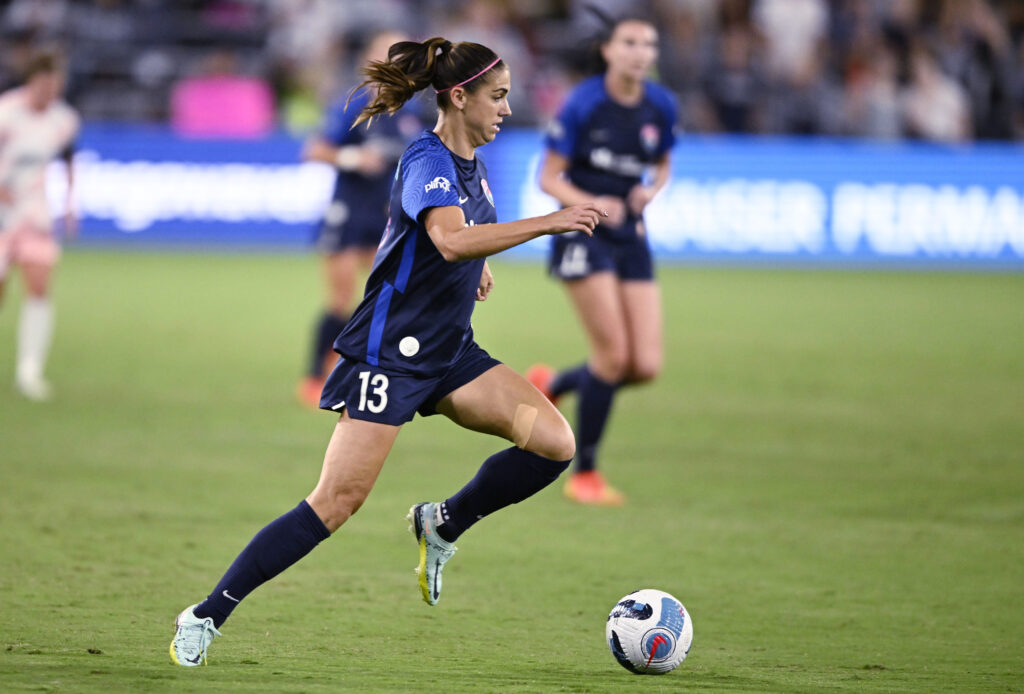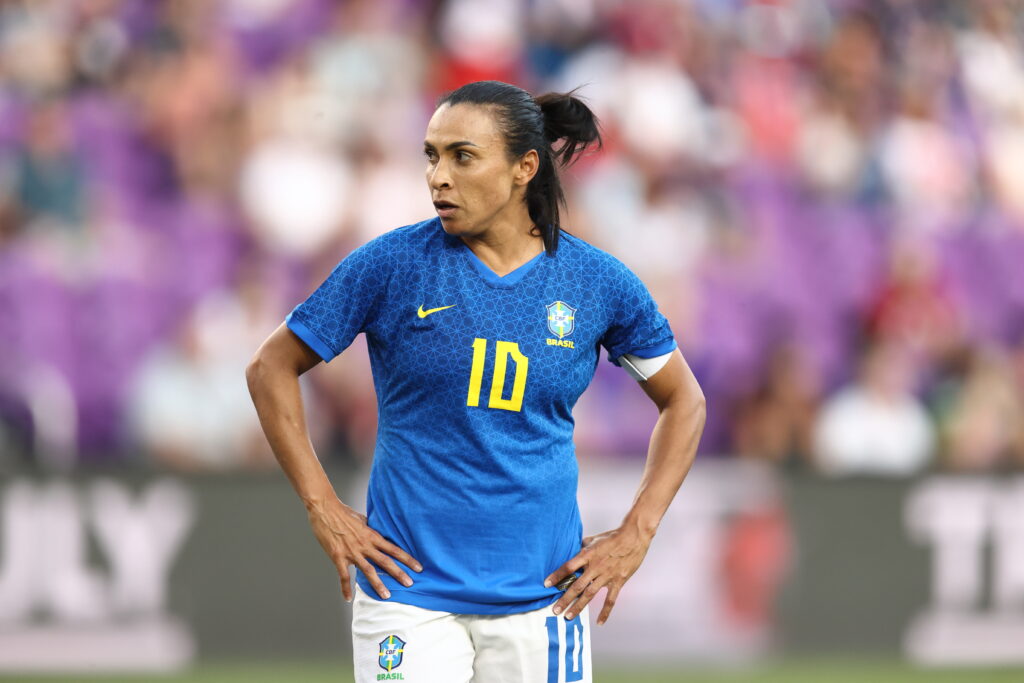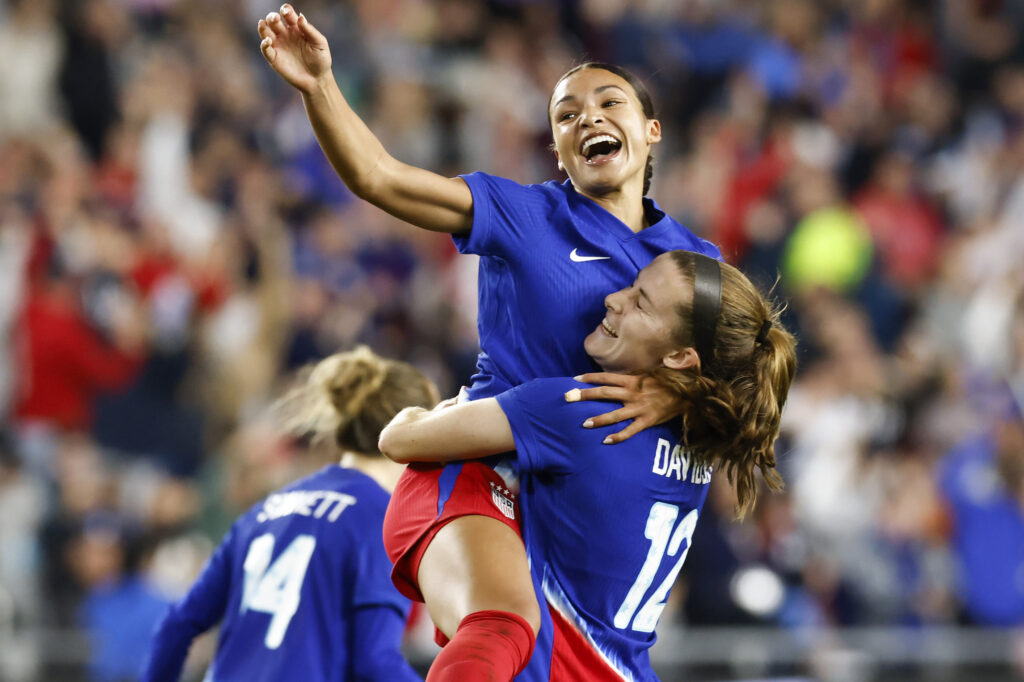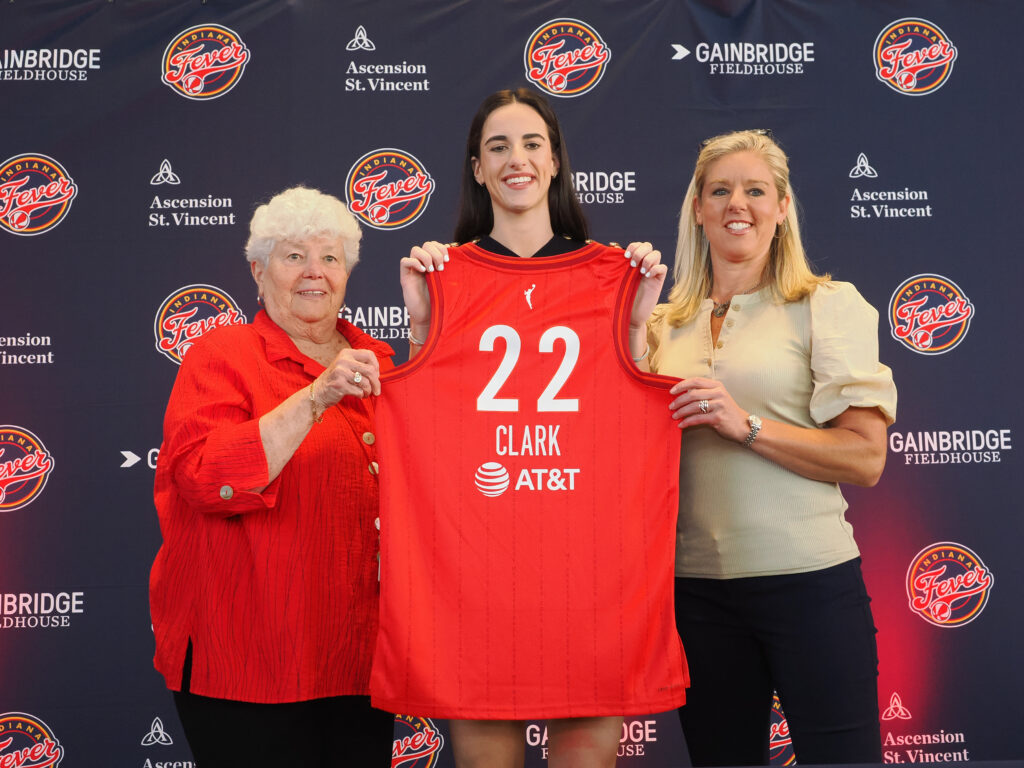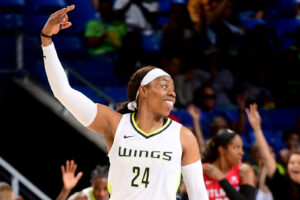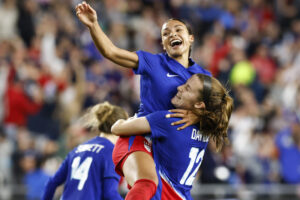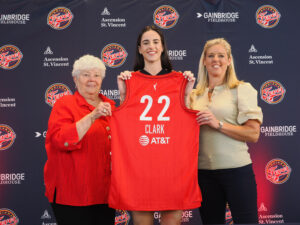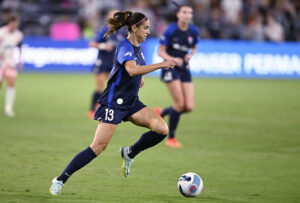Kailen Sheridan went days with her phone by her side but no phone call, at least not the one she was hoping for. With the deadline approaching for Canadian women’s national soccer team coach Bev Priestman to name her roster for the Olympics, Sheridan and others in Team Canada’s player pool waited with anticipation.
Sheridan watched as her Gotham FC teammate, Evelyne Viens, received the call that she would make her Olympic debut in Tokyo.
Still Sheridan waited, but with a quiet confidence.
As Sheridan rode the Gotham team bus to the airport in late June, surrounded by teammates, her phone finally rang. It was Priestman. After sharing formalities with the coach, Sheridan broke into a smile. Her teammates began to make celebratory noises, barely loud enough for Priestman to hear.
Once Sheridan ended the call, the group exploded into screams of joy. Sheridan used her hands to cover her face, overwhelmed with emotion over her first selection to Canada’s Olympic team.
The moment @Kailen_Sheridan found out she was Tokyo bound in front of her teammates 😭
— NJ/NY Gotham FC (@GothamFC) June 23, 2021
Kailen has been named to the @CanadaSoccerEN roster for the Olympics 🇨🇦 👏 pic.twitter.com/chqk9m0RnM
Sheridan had been to the Olympics before, as a 20-year-old alternate for Team Canada in Rio five years earlier. But this was a validation of her journey, and the culmination of a dream she’d had since watching the national team with her parents as a young girl growing up in Whitby, Ont.
“Being an alternate gave me an understanding of how incredible this opportunity is,” Sheridan says. “It lit a fire for me. I wanted the next step up and to achieve that childhood dream of playing in the Olympics, being on the podium and hearing your national anthem.”
Given what Sheridan went through in the months leading up to her selection, a situation that threatened this very opportunity, the feeling was even sweeter.
***
Kailen Sheridan’s Olympics journey accelerated at the SheBelieves Cup in Orlando, Fla. in February.
A banner year with Gotham, her NWSL club, and a spot on Canada’s Olympic team were Sheridan’s goals entering 2021. And Canada’s game against the United States in the annual spring tournament presented her with a prime opportunity.
Starting at goalkeeper against the No. 1 team in the world, Sheridan warmed up with intention and lined up between the goalposts ahead of kickoff, ready to make an early case for the Olympics.
Just a few minutes into the game, however, all of the goals she’d set for herself were suddenly in jeopardy.
Sheridan felt a tweak in her right leg not long after the opening whistle. And after passing the ball to her teammate in the seventh minute, she went down, knowing something wasn’t right. Her teammates helped her up as she walked gingerly toward the sideline.
An MRI revealed that Sheridan had torn her right quad off the bone with a four-centimeter retraction.
As Sheridan recalls it now, the various opinions from doctors caused a severe emotional burden, with her dream of making the Olympics hanging in the balance. After a discussion with her team, Sheridan opted to have surgery.
“I was really struggling and, mentally, it was a hard time for me,” Sheridan says. “I was doing the right things and it was taken away, which emotionally impacted me a lot.
“I have a mental coach with Canada and a sports psychologist with Gotham. Once the decision was made of what we were going to do, they kept telling me, ‘You need to have a strategic plan and keep making these little benchmarks.’ That was super helpful, especially on the days where I was a mental mess. I had a chance to recover and I needed that confidence from them.”

On March 1, Sheridan underwent the procedure to repair her right quad. Before she went into surgery, Sheridan drew the five Olympic rings and wrote on her hand the number of days she understood it would take her to recover — 98.
Only two days after surgery, Sheridan was back to training, performing light workouts and catching balls. Three weeks out from her procedure, she posted a video of herself running on a treadmill. As she worked with her physiotherapist and trainer in Philadelphia, Sheridan began recovering at an exponential rate.
But even she admits that her competitive fire needed to be reined in at times for the sake of her health.
“My physio said, ‘It’s been a week, slow down,’” Sheridan says. “I was really lucky to have the people that I had, the staff, the doctors, my team at Gotham. They were really supportive.”
Sheridan’s determination to get back on the field did not surprise Eddie Radwanski, her former college coach with the Clemson Tigers. Radwanski recalled a game against Virginia Tech in 2015 when Sheridan broke a bone in her wrist and kept playing. She was out for two weeks after that but remained a supportive teammate. Her competitiveness inspired her teammates and translated to on-field success, including an ACC Championship in 2016.
“Kailen supporting her teammates epitomized what she brought to the team and why it was so special,” Radwanski says. “They rooted for each other. They were there for one another. They sincerely loved each other.”
Sheridan’s approach hasn’t changed in the pros.
Dan Ball, the goalkeeper coach for Gotham FC, worked with Sheridan to help her get back into playing form. During a practice before the regular season, five weeks after surgery, Ball launched a ball to the top corner of the net. Sheridan dived across to make the save. At that moment, Ball knew she wasn’t just looking to return early, but to return as a better player than she was before.
“I looked at the conditioning coach with eyes wide open,” Ball says. “Not many people could do what she did so close to her surgery. She is beyond elite.”
Sheridan appeared in five games for Gotham during the first half of the season. She allowed just two goals and is third in the NWSL with 27 saves, one of which against the Portland Thorns was voted the Save of the Week.
The hero Gotham deserves 🦇@Kailen_Sheridan's amazing stop takes home @Verizon Save of the Week honors for Week 3 ✅@GothamFC | #NWSL21 pic.twitter.com/AY7J4LEdsQ
— National Women’s Soccer League (@NWSL) June 2, 2021
Away from the field, Sheridan never changed. She is a source of entertainment for her teammates with her dancing and singing. Having a goalkeeper who provides youthful energy, and is the anchor of defense on the field, has been critical for Gotham FC’s morale.
“She’s a big presence,” says Gotham FC head coach Freya Coombe. “She’s funny, she’s always got a little dance move, and she’s a great mom to her dog, Koda. Kailen is very driven and helps drive the standards of the team forward.”
***
Before leaving for Tokyo on July 8, Sheridan and her teammates spent two weeks in training camp in Irvine, Calif. The practices gave Sheridan a chance to reunite with her Canadian teammates and compete with veteran Stephanie Labbé for the starting goalkeeper spot.
Team breakfasts highlight how unified the team is, Sheridan said. But once the players hit the field, the competitive switch turns on.
“We develop those incredible relationships with each other where we can poke fun away from the pitch,” Sheridan says. “Our competitive edge is what is going to bring us that grit and passion on the field, and even off the field playing board games. That’s what it will take to get us to the top of the podium.”
Sheridan’s teammates are quick to praise her and her value to the roster.
“If I want to be the best striker, I have to train against the best keeper,” Viens says. “When I score against Kailen, I know it’s a good goal against most keepers. When I don’t, it gives me a chance to work with her to see how I can improve.”
“We get spoiled because Kailen is up for ‘Save of the Week’ pretty much every week, so it isn’t a surprise anymore,” says Canadian forward Janine Beckie. “She’s got a great personality, very bubbly and bright, and it translates into her explosive game, which is exciting to watch.”

Priestman has yet to name a starting goalkeeper, with Canada’s Olympic opener set for Wednesday against the host nation of Japan. Group games against Chile and England will follow. The fact that Sheridan is on the team and vying for the top spot, given where she was five months ago, is worthy of commendation.
Instead of the 98 days she wrote on her hand pre-surgery, Sheridan required 75.
The Olympics will look and feel different, due to the global COVID-19 pandemic, no fans in the stands and a plethora of daily health protocols. Sheridan will enjoy the moment regardless, focusing on the task at hand and cherishing the opportunity to grow into Canada’s goalkeeper of the future.
“This injury has pushed me to be better off the field, and being on this team will push me to be better on the field, setting the standard for future generations of players to come,” Sheridan says. “There’s definitely people looking at us, expecting things and looking up to us, not only to be inspired but to know that being a professional women’s soccer player is a viable option now. If you really work hard, are determined and stay true to your dreams, then you can do this.”
